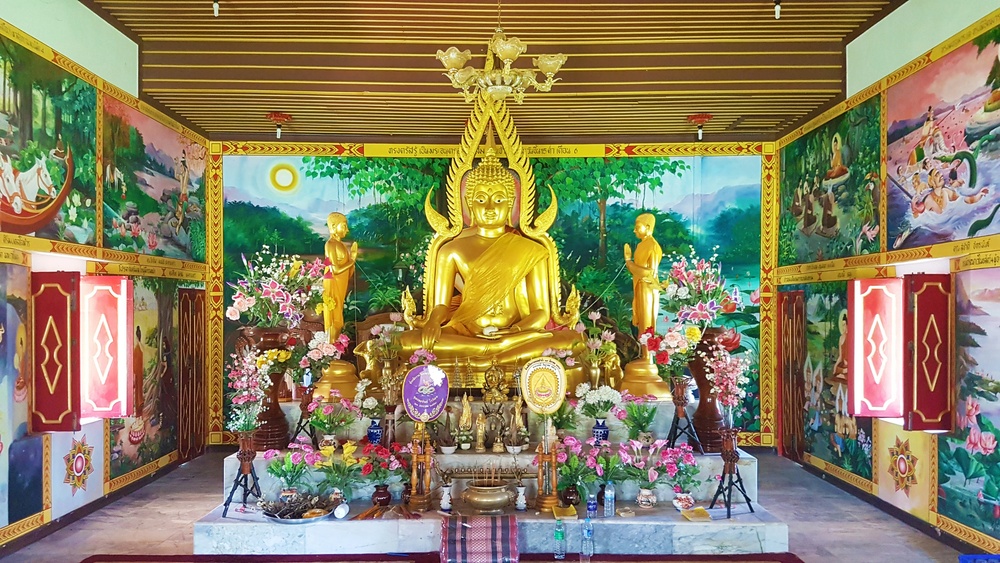Embarking on a Bihar Buddhist Circuit Tour is more than just visiting temples and ancient ruins – it is a transformative journey tracing the life and teachings of Lord Buddha. From Bodh Gaya’s enlightenment site to Nalanda’s world-renowned university ruins, planning your tour systematically ensures a deeply enriching experience. Here is a complete guide to planning your Bihar Buddhist Circuit Tour for a seamless, spiritual, and insightful trip.
1. Understanding the Bihar Buddhist Circuit Tour
The Bihar Buddhist Circuit Tour connects significant sites associated with Lord Buddha’s life in Bihar. It includes places where he attained enlightenment, meditated, preached, and spent many years teaching his disciples. The key destinations are Bodh Gaya, Rajgir, Nalanda, Vaishali, Kesariya, Lauriya Nandangarh, and nearby spiritual sites like Sujata Kuti and Barabar Caves.
2. Best Time to Visit
The ideal time to undertake your Bihar Buddhist Circuit Tour is between October and March when the weather is pleasant and suitable for walking trails, ropeway rides, and exploring open-air archaeological sites. Summers can be extremely hot, while monsoons may hinder movement due to heavy rainfall in the region.
3. Duration of the Tour
A well-planned Bihar Buddhist Circuit Tour ideally requires 5 to 7 days to explore the main sites comfortably without rushing. If you wish to meditate deeply at Bodh Gaya or attend teachings and chanting ceremonies, adding an extra day or two is recommended.
4. Starting Point
The best starting point is Patna, the capital city of Bihar, which is well connected by flights, trains, and buses from major Indian cities like Delhi, Kolkata, Mumbai, and Varanasi. From Patna, you can proceed towards Bodh Gaya and follow the circuit route systematically.
5. Top Places to Include in Your Bihar Buddhist Circuit Tour
Here is a suggested route with the key sites:
- Bodh Gaya: Mahabodhi Temple, Bodhi Tree, Great Buddha Statue, Thai, Japanese, Bhutanese, Tibetan, and other international monasteries.
- Sujata Kuti: Close to Bodh Gaya, where Sujata offered kheer to Siddhartha before his enlightenment.
- Rajgir: Gridhakuta Hill (Vulture’s Peak), Venuvana Vihar, Japanese Peace Pagoda, Ajatshatru Fort, and hot springs.
- Nalanda: Nalanda Mahavihara ruins (UNESCO site) and Nalanda Archaeological Museum.
- Vaishali: Ananda Stupa, Ashokan Pillar, Kutagarasala Vihara.
- Kesariya Stupa: World’s tallest stupa located in East Champaran.
- Lauriya Nandangarh: Ashokan Pillar with lion capital and nearby stupa mound.
- Barabar Caves: Oldest rock-cut caves dating back to the Mauryan period near Gaya.
6. How to Travel Within the Circuit
- By Road: The destinations are well connected by road, and hiring a private cab for your Bihar Buddhist Circuit Tour is the most convenient option for comfort and flexibility.
- By Train: Bihar has a good rail network, with stations at Gaya, Rajgir, Nalanda, Vaishali (via Hajipur), and Muzaffarpur for Kesariya.
- Local Transport: Autos and local taxis are available in each city for short transfers.
7. Accommodation Options
Being a prominent pilgrimage circuit, the destinations offer varied accommodation:
- Bodh Gaya: Wide range from budget guesthouses and monastery stays to 4-star hotels.
- Rajgir & Nalanda: Budget hotels and government-run tourism guesthouses.
- Vaishali & Kesariya: Limited options; it is recommended to stay overnight in Muzaffarpur or Patna for better facilities.
Advance booking is advisable, especially during peak pilgrimage season (December to February).
8. Important Tips for Your Bihar Buddhist Circuit Tour
- Respect local customs: Dress modestly, especially inside temples and monasteries.
- Carry cash: ATMs are available only in major towns.
- Hire guides: At Bodh Gaya, Nalanda, and Rajgir to understand historical and spiritual significance in depth.
- Stay hydrated: Carry water bottles as you will be walking and exploring under the sun for long hours.
- Meditate mindfully: Take time to sit under the Bodhi Tree or at Gridhakuta Hill to reflect and absorb the spiritual ambience.
9. Festival and Events
If possible, plan your Bihar Buddhist Circuit Tour during:
- Bodh Mahotsav (January-February): Cultural festival in Bodh Gaya with dance, music, and meditation events.
- Buddha Jayanti (April-May): Celebrating Buddha’s birth, enlightenment, and Mahaparinirvana with prayers and processions.
10. Extend Your Journey
Many pilgrims extend their tour to include Kushinagar in Uttar Pradesh, where Buddha attained Mahaparinirvana, or Sarnath near Varanasi, where he delivered his first sermon. These can be clubbed for a comprehensive Buddhist pilgrimage circuit in North India.
Conclusion
The Bihar Buddhist Circuit Tour is not just a travel itinerary but a journey of inner transformation, retracing the path of Lord Buddha’s enlightenment and teachings. Planning your tour with awareness of routes, best times, accommodation, and local etiquette will ensure you experience the sacredness, peace, and historical depth of these sites in their truest essence. Embark on this timeless journey to return with deeper wisdom, inner peace, and blessings from the land where the Buddha once walked.


